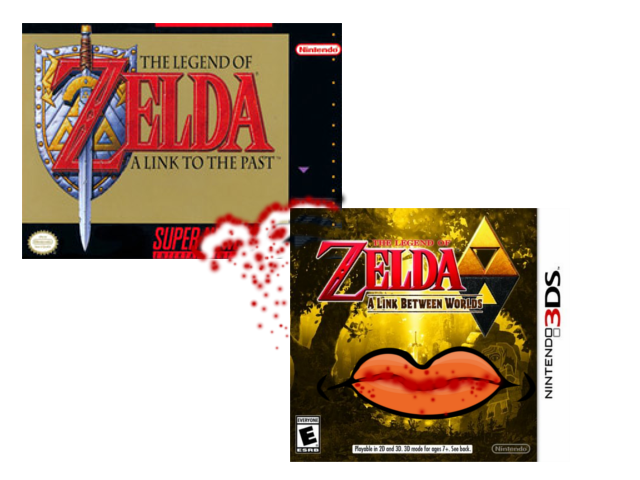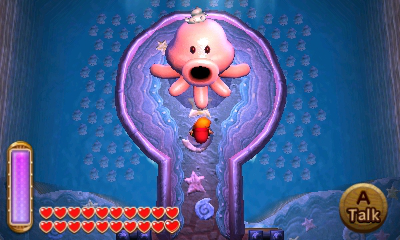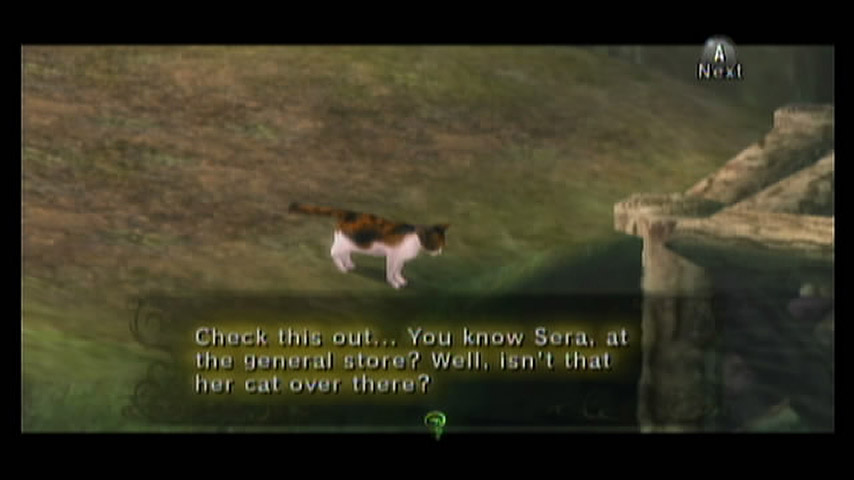Unpacking A Link Between Worlds
Posted on February 22 2015 by Mark Olson
 A Link Between Worlds was nigh on universally acclaimed upon its release. Critics praised the game for its focus on gameplay, its well designed dungeons, and the cavalcade of nostalgic references to its predecessor, A Link to the Past. In this article, I look at aspects of A Link Between Worlds that I found unique to the game, be it good or bad.
A Link Between Worlds was nigh on universally acclaimed upon its release. Critics praised the game for its focus on gameplay, its well designed dungeons, and the cavalcade of nostalgic references to its predecessor, A Link to the Past. In this article, I look at aspects of A Link Between Worlds that I found unique to the game, be it good or bad.
First things first, let’s get the obligatory introduction out of the way; this is my article, written from my perspective, detailing how I view the game. In no way, shape, or form am I attempting to pass off anything written here as fact. If you have differing views on the game or any aspects of it mentioned in this article, that’s perfectly fine. Also, full disclosure, A Link to the Past is my favorite game in the Zelda series. As such, my opinion on A Link Between Worlds was certainly influenced by the love I bear for the game it is modeled after. Now, on to the article proper.
A Link Between Worlds was always billed as a successor to A Link to the Past. Heck, in Japan the game is called Triforce of the Gods 2. I think that this is important to keep in mind when judging the game; it was intended to feel like A Link to the Past. It is also important, however, to draw a line between judging it as a sequel and as a game in its own right. As a sequel, A Link Between Worlds works fantastically. It successfully captures the essence of what made A Link to the Past so great in the gameplay department and puts a glossy, modern sheen on the visuals and music. The heart of A Link to the Past is in A Link Between Worlds, but there are enough new ideas that players never get the impression that A Link to the Past was outright cannibalized in the development of this new game.
As a game in and of itself, A Link Between Worlds certainly gets one thing right: the controls. Movement and combat feels fluid and seamless in the game, particularly for any players of A Link to the Past; if you have played that game, you have a good idea of what you’re going to get as far as the controls. Though some may be turned off by this very fact, I for one saw it as a major thing going in the game’s favor. A Link to the Past controlled so well that playing its successor feels like slipping into a warm pair of old slippers.
One thing that pleasantly surprised me about A Link Between Worlds was the optional content; most Zelda games have sidequests in some manner, but A Link Between Worlds really nails it. This game’s equivalent to the Cave of Ordeals in Twilight Princess is known as the Treacherous Tower, and is an absolute blast to play. The fluidity of A Link Between Worlds’ aforementioned controls makes the combat found in the tower fun, plus the difficulty is generally fair.
The largest and most labor-intensive sidequest to be found in A Link Between Worlds is, of course, the Maiamai hunt. Finding the little creatures is, according to who you ask, a fun side objective to keep an eye out for or an unbearably monotonous chore. Personally, I fall into the former category. I found the quest early on in my first playthrough and thusly encountered most of the Maiamais naturally over the course of the game. Hunting down those last few Maiamais was a challenging but enjoyable experience that really forced the player to scour every corner of A Link Between Worlds’ Hyrule and utilize every tool and skill acquired throughout the game. It was a fun side project that provided an incentive (in addition to heart pieces) to go through Hyrule with a fine-toothed comb.
As the two of you who actually remember my first article may know, the precious few minutes (or in the case of Twilight Princess and Skyward Sword, horrifically dull hours) found at the onset of Zelda games are near and dear to my heart. At least, the good ones are. I can safely say that the introduction to A Link Between Worlds does its job and does it well without wasting any of my time. The player is flung from their nest with minimal introductions. We get a sword, the interface tells us how to use it, and we are off to try and save Seres. The exposition is wonderfully brief and allows the player to jump right into the action without having to find anyone’s cat.
Just as A Link Between Worlds’ introduction is short, so is the game. Indeed, the game clocks in at about fifteen hours for the average player, a good point for some but not for others. I found the shorter length to be a blessing; the game’s quality was consistent and the game held an impressive momentum right up to the credits. Whereas the more recent 3D installments of the Zelda franchise have been rife with padding around the two-thirds mark, A Link Between Worlds whisked the player from one dungeon to the next with next to no breathing room in between. Though this meant that we got less game in terms of pure length, A Link Between Worlds took out anything and everything that simply wasn’t as fun as the rest of the game, leaving us with a more compact experience.
An interesting point that A Link Between Worlds brings up in my mind (and certainly that of many others) is striking a balance between openness and difficulty progression. A Link Between Worlds had two sections, one of which the player had to complete to get to the other, but this is effectively the only manner of inhibiting player progression utilized in the entirety of the game. In these two sections, the player is let loose and allowed to do the dungeons in any order that they choose. There are pros and cons to this situation. A major positive is the openness of the game. I love being allowed to complete dungeons when I want as opposed to having them artificially blocked off until I check off prior tasks.
On the other hand, however, Nintendo lets go of any control that they had on the game’s relative difficulty. They can’t make any one dungeon of the seven that the player can choose from in Lorule significantly more challenging than any other dungeon of those same seven. If anything, I found the dungeons to become easier the further along I got in the game; because the dungeons were at the same general level of difficulty, the game got easier when I had procured items from the other dungeons.
A Link Between Worlds’ manner of player progression was on the opposite end of the spectrum from the 3D games, particularly Skyward Sword and Twilight Princess. In my humble opinion, A Link Between Worlds may have gone a bit far. Don’t get me wrong; I far prefer being able to choose my dungeons and have difficulty suffer as a result than not being able to choose my dungeons but have an increase in difficulty. However, I think that A Link to the Past found the sweet spot between challenge and freedom; in the Dark World, the player could, with the exception of the Thieve’s Hideout, do the dungeons in any order they so chose, but each dungeon had a suggested order. This doesn’t take away freedom, but it lets the developers kick the crap out of a player for straying into a challenging dungeon and still reserve the right to say “I told you so”.
What do you guys think? Did you find A Link Between Worlds as rewarding as I did or were you of the belief that it was no where near as good as it could have been? No matter your opinion, share it below.







